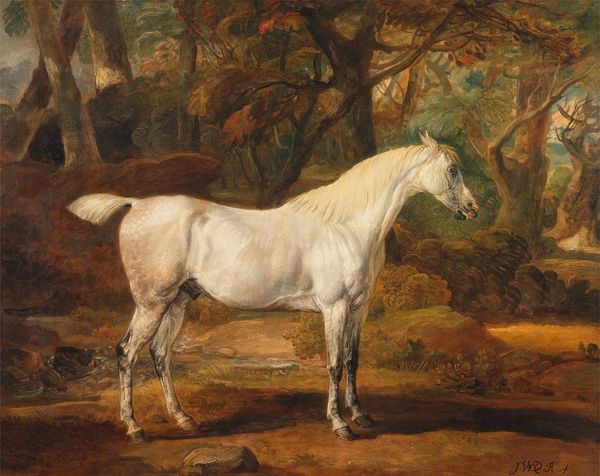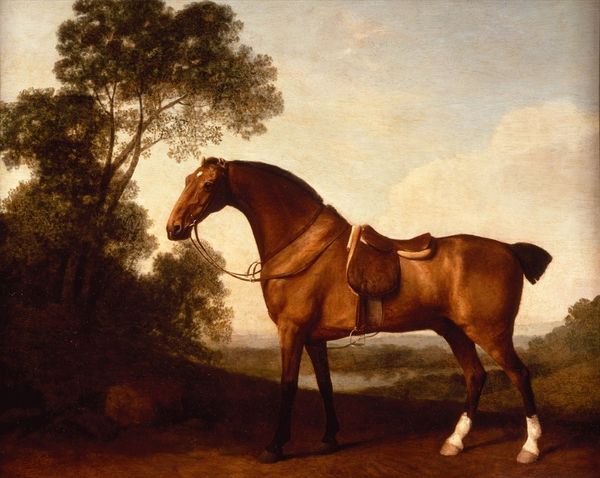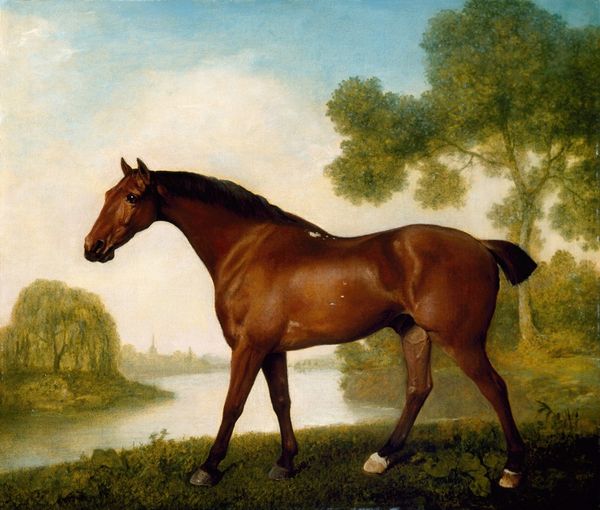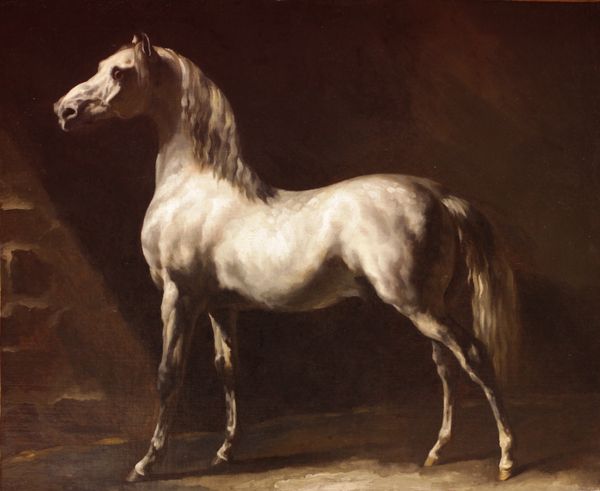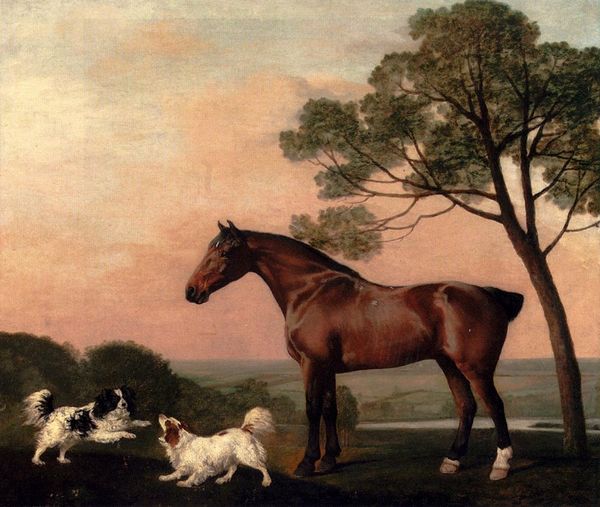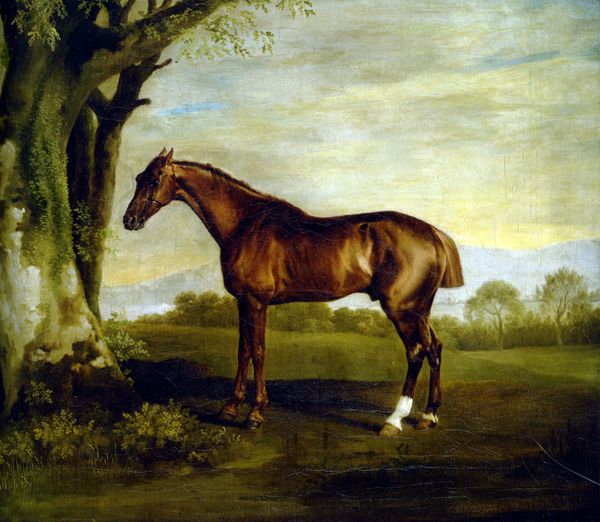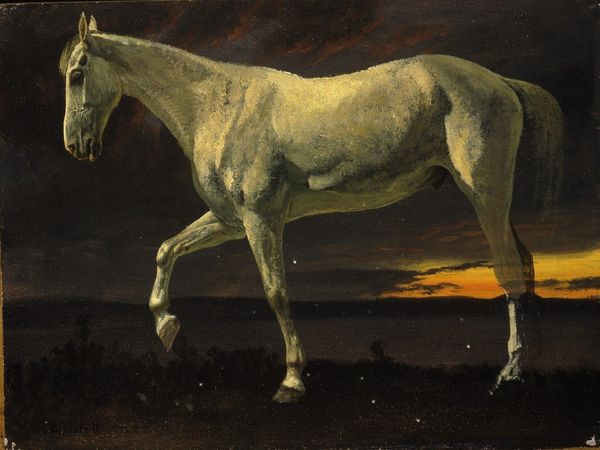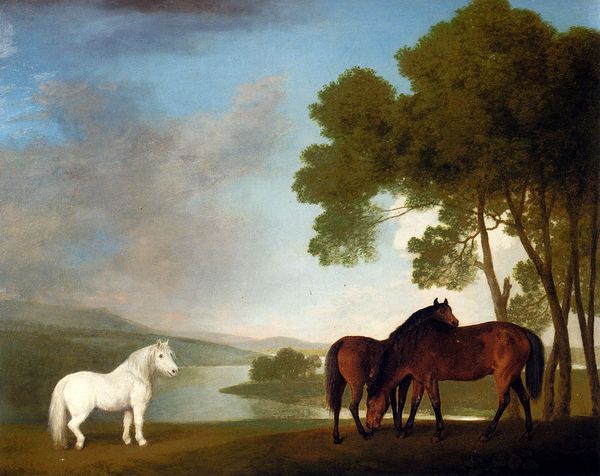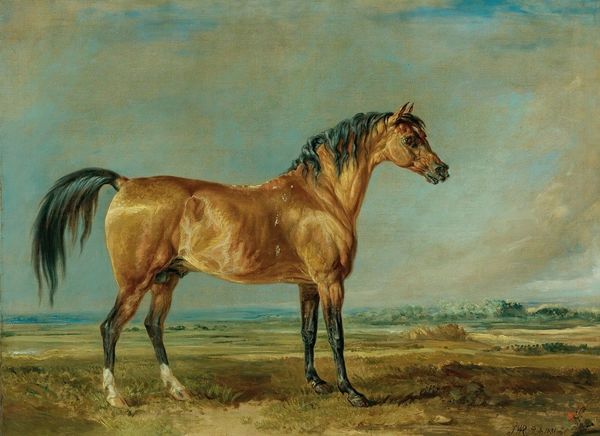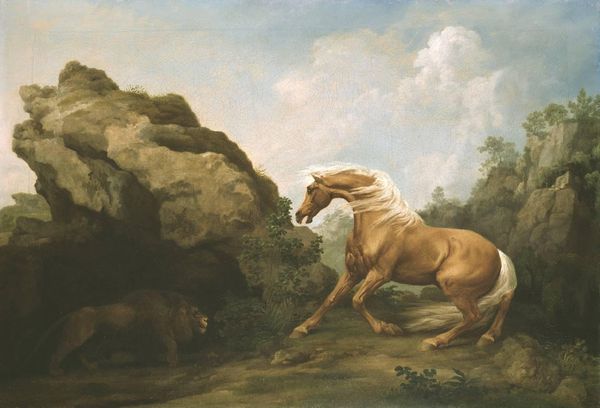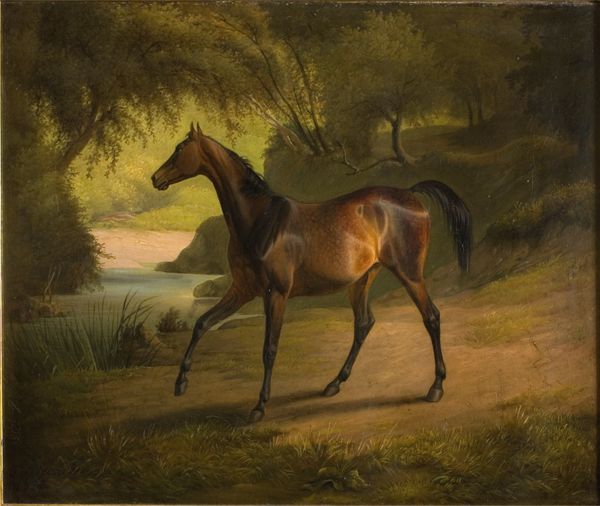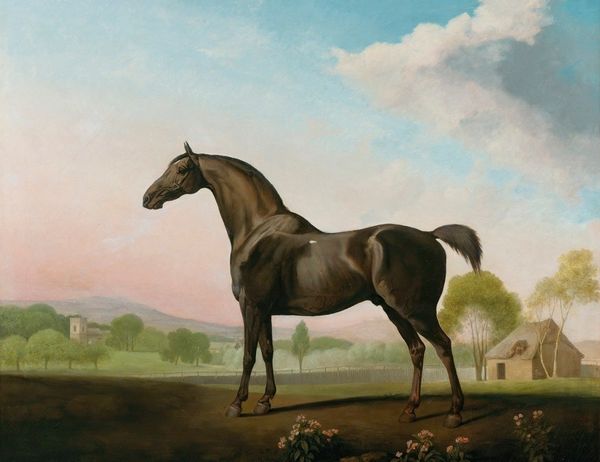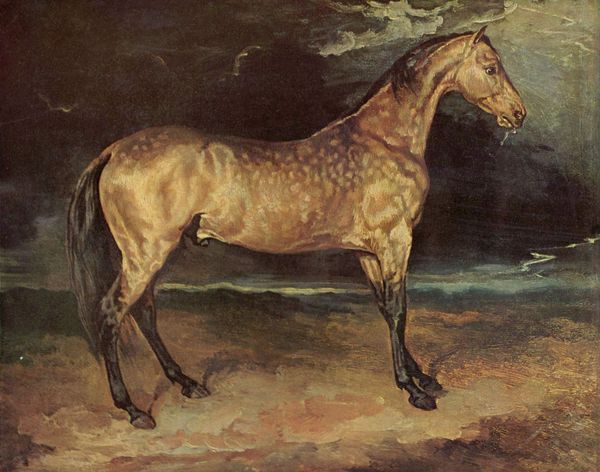
painting, oil-paint
#
portrait
#
animal
#
painting
#
oil-paint
#
landscape
#
oil painting
#
romanticism
#
animal portrait
#
horse
#
genre-painting
Dimensions: 72.4 x 63.5 cm
Copyright: Public domain
Curator: Here we have "A Grey Stallion in a Landscape", an oil painting attributed to George Stubbs. What's your immediate reaction to it? Editor: An idealized stillness. The palette, primarily earth tones, feels very controlled. It's as though the horse is presented as an allegorical figure rather than a mere animal. Curator: Indeed. Stubbs, well-known for his anatomical precision, painted many portraits of animals, often commissioned by wealthy landowners. In these commissions, we see an interesting negotiation of power dynamics. The horse, in particular, served as a signifier of status and wealth, mirroring broader socio-economic hierarchies. Editor: I can see that. I’m curious about this idea of “status”. Consider how the portrayal of animals in art also perpetuates particular ideologies regarding dominion and ownership, and, more broadly, the gendered dimensions of landscape. Isn’t this idyllic portrayal strategically blind to the realities of animal exploitation inherent in aristocratic culture? Curator: A valid point. I think considering Stubbs’ work within contemporary critical animal studies offers a way to scrutinize these power structures. It begs the question: whose gaze dictates the representation? While we marvel at the aesthetic quality, we must question the ethical implications woven within its creation and consumption. How might we view this artwork through an intersectional lens, one attentive to issues of speciesism and class privilege? Editor: Perhaps approaching it from a postcolonial angle would illuminate how representations of animals and landscapes become entangled with narratives of ownership and control, furthering our comprehension of its complex layers. Curator: Exactly. Understanding the history of land ownership during Stubbs' time is crucial. The enclosures, the gentry—it all speaks to a very specific relationship between people, property, and the natural world. Editor: And, perhaps most importantly, this contextualisation should drive conversations and encourage critical thinking about our ongoing responsibility to challenge oppressive regimes. Curator: Absolutely. It requires us to dismantle traditional views on these subjects in our contemporary moment. Thanks to the picture's symbolism, viewing art is far from a purely aesthetic experience. Editor: I concur entirely. It transforms into an exploration of entrenched ideologies.
Comments
No comments
Be the first to comment and join the conversation on the ultimate creative platform.
